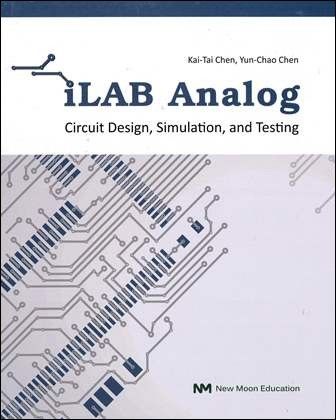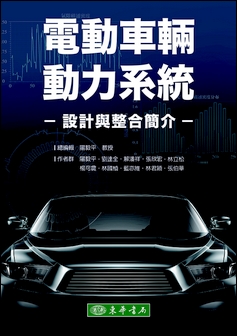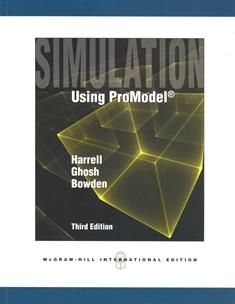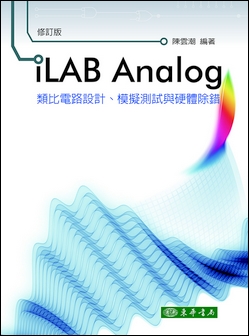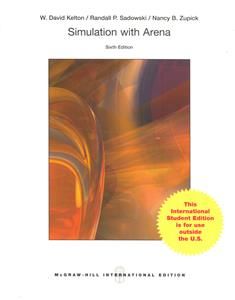書籍分類
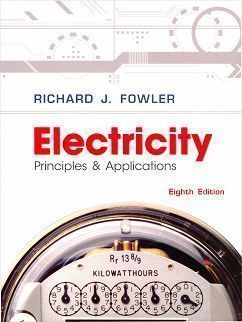
Electricity: Principles and Applications 8/e
作者:Richard J. Fowler
原價:NT$ 1,900
ISBN:9780071315470
版次:8
年份:2013
出版商:McGraw-Hill
頁數/規格:526頁/精裝彩色
版次:8
年份:2013
出版商:McGraw-Hill
頁數/規格:526頁/精裝彩色
內容介紹 本書特色 目錄
- Description
This widely-used text prepares students for entry-level jobs in electronics, electrical trades and related fields. Its level and approach are ideal for both electronics and electricity programs looking for a relatively short, applied book covering DC/AC circuits. Additional chapters on topics such as safety, transformers, motors, instrumentation, and residential wiring are also included. No prior knowledge of electricity is assumed; the only prerequisites are arithmetic and basic algebra. Practical skills are emphasized throughout the text, and supported in the hands-on work provided in the companion Experiments Manual. MultiSim circuit files are provided, on a bound-in CD ROM, for those who want to bring software simulation work into their classes and labs.
- Features
- Practical, easy-to-understand explanation of DC and AC circuits; students with all math backgrounds will find the book readable and accessible.
- Frequent Self-Test questions and worked examples provide students with immediate feedback and step-by-step procedures for learning key concepts and applications.
- Students can now learn about new energy sources in Appendix K, Renewable Energy Sources and Technologies
- Contains classroom PowerPointR presentations for every chapter, EZ-Test Generator, supplemental PowerPointR presentations, and more. PowerPointR presentations have been revised and updated, with video clips added in several places.
- Experiments Manual for Electricity: Principles and Applications correlates with the text and helps students gain practical, hands-on experience and troubleshooting skills. MultiSim files are available for those who integrate simulation with their lab experiments.
- Popular features such as learning outcomes, highlighted key terms, color-coded circuit components, and About Electronics have been retained and updated.
- Concepts build from section-to-section and chapter-to-chapter, with tests at regular intervals and review questions at the end of each chapter.
- Expanded the section on “efficiency” to include information on neon light bulbs and LEDs.
- Added a new EXAMPLE that examines the efficiency of a complete system (i.e. a battery and light bulb circuit). The new Self-Test question 11, and the answer to question 11 at the end of the chapter, follow up on working with system efficiency.
- Added new Self-Test and “Chapter Review” questions and problems.
- Changed the concluding paragraph of the “current in a vacuum” section to emphasize that devices that relied on thermionic emission and current in a vacuum have mostly been replaced by LCDs and solid-state devices.
- Added discussion of when to italicize a symbol (abbreviation) used in formulae.
- Added more EXAMPLES that show how to use "powers of 10". EXAMPLE 2-9 shows how to express a base 10 number of less than one in the power-of-ten format. EXAMPLE 2-10 shows how to add, subtract, and divide numbers expressed in powers-of-ten. Also added Self-Test question 59 and its answer to give more practice on the procedures shown in the two added examples.
- Added new Self-Test and Chapter Review questions and problems.
- Added to chapter summary and review.
- Modified the section on Circuit Essentials.
- Clarified the discussion calculating power.
- Added more Chapter Review questions and problems.
- Added Self-Test and Chapter Review questions.
- Added a discussion on testing sealed lead-acid cells.
- Added a section on Fuel Cells.
- Added to the discussion of LEDs.
- Added an EXAMPLE for switch ratings.
-
Added new EXAMPLES that:
- Require solving a series circuit containing a rheostat.
- Require determining the internal resistance of a battery.
- Require determining currents in a parallel circuit.
- Require determining the currents in a loaded zener-diode regulator circuit.
- Extended the discussion of “rules of thumb” for estimating current.
- Added material that illustrates the advantage of using the current divider formula.
- Added Chapter Review Problems.
- Added questions and problems to the Experiments Manual Chapter 5 test.
- Added a new EXAMPLE illustrating the use of simultaneous and loop equations.
- Added a new figure showing flux pattern around a MIG-arc-welder cable carrying 60 A to 120 A.
- Replaced three figures with new pictures to better show flux patterns under a variety of conditions.
- Added an EXAMPLE showing how to calculate relative permeability.
- Added more Chapter Review Problems.
- Added new EXAMPLES in the Three-Phase Alternating Current section.
- Added more Chapter Review Problems.
- Added more Chapter Review Problems.
- Expanded the introduction to the chapter to include use of large capacitors for PF correction.
- Added EXAMPLES emphasizing C, V, and Q relationships and RC time constants.
- Added an EXAMPLE on calculating the inductance of an inductor.
- Expanded the section on “Type of Inductors”.
- Added the inductance formula to the “Related Formulas”.
- Added more Chapter Review Problems.
- Added EXAMPLES showing how to calculate coefficient of coupling, mutual inductance, and transformer ratings.
- Expanded discussion of transformer “Windings in Parallel”.
- Added formulas to “Related Formulas”.
- Added more Chapter Review Problems.
- Added to the discussion of EXAMPLE 13-5 to show other ways to calculate the cos θ.
- Added an EXAMPLE dealing with Z and BW of a series resonant circuit.
- Added more Chapter Review Problems.
- Added new EXAMPLES dealing with temperature rating of a motor and the R of a cable connecting to a motor.
- Expanded the discussion of reversing rotation of one-phase and three-phase motors.
- Added seven new problems to the Chapter Review Problems.
- Expanded the explanation of how a DMM measures current.
- Added an EXAMPLE dealing with ratings of meter movements.
- Expanded the discussion of sensitivity ratings of ac and dc voltmeters.
- Added more problems to the Chapter Review Problems.
- Re-emphasized the color and proper use of the neutral conductor.
- Added an EXAMPLE illustrating the current flow in each conductor when a short develops.
-
Expanded the discussion on AFCI protection.
New Multisim-11 files have been created. The files are located on the CD-ROMs for the textbook and the Experiments Manual, as well as on the Online Learning Center
New To This Edition
Electricity: Principles and Applications has been revised to include more Examples, MultiSim Files for version 11.0, clearer explanations, and more Self-Tests and review questions for your students. The following is a chapter-by-chapter list of major changes to the textbook:
Chapter 1
- Table of Contents
1. Basic Concepts
2. Electrical Quantities and Units
3. Basic Circuits, Laws, and Measurements
4. Circuit Components
5. Multiple-Load Circuits
6. Complex-Circuit Analysis
7. Magnetism and Electromagnetism
8. Alternating Current and Voltage
9. Power in AC Circuits
10. Capacitance
11. Inductance
12. Transformers
13. R, C, and L Circuits
14. Electric Motors
15. Instruments and Measurements
16. Residential Wiring Concepts



